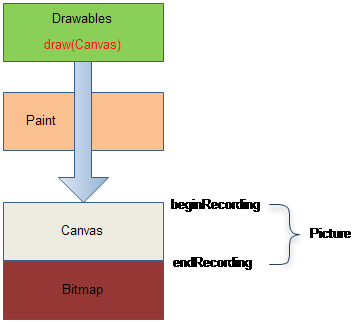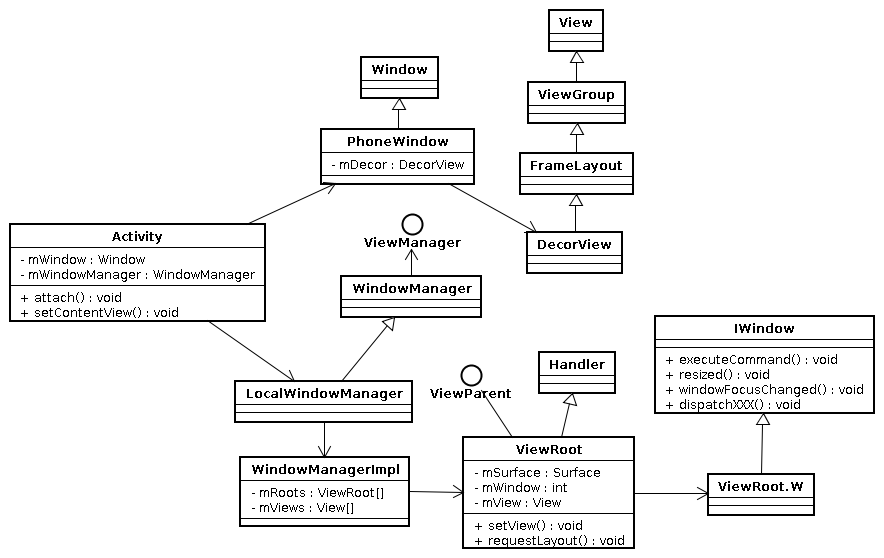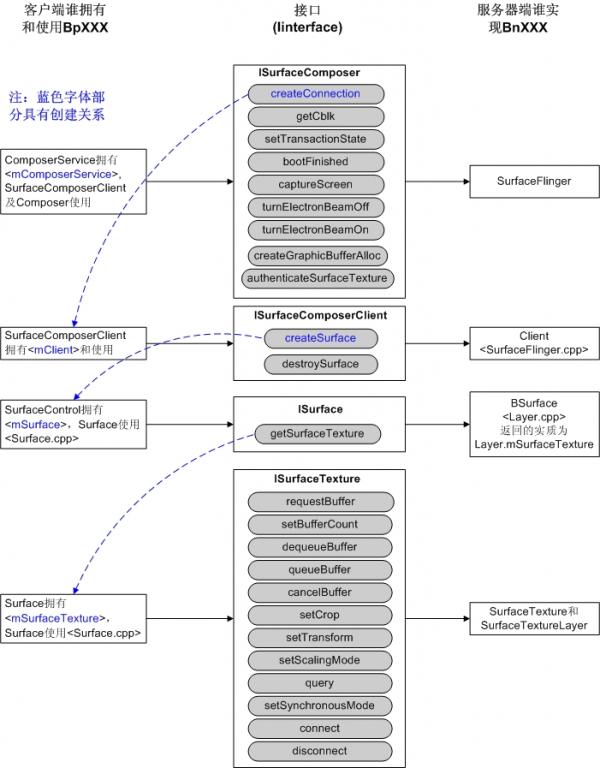/hardware/ril/libril/ril.cpp下有如下代码:
s_fdListen = android_get_control_socket(SOCKET_NAME_RIL);
if (s_fdListen < 0) {
LOGE("Failed to get socket '" SOCKET_NAME_RIL "'");
exit(-1);
}
if (listen(s_fdListen, 4)) {
exit(1);
}
s_fdCommand = accept(s_fdListen, (sockaddr *) &peeraddr, &socklen);
这个android_get_control_socket函数有什么作用呢? android_get_control_socket函数定义在/system/core/include/cutils/sockets.h:
#define ANDROID_SOCKET_ENV_PREFIX "ANDROID_SOCKET_"
#define ANDROID_SOCKET_DIR "/dev/socket"
#ifdef __cplusplus
extern "C" {
#endif
/*
* android_get_control_socket - simple helper function to get the file
* descriptor of our init-managed Unix domain socket. `name' is the name of the
* socket, as given in init.rc. Returns -1 on error.
*
* This is inline and not in libcutils proper because we want to use this in
* third-party daemons with minimal modification.
*/
static inline int android_get_control_socket(const char *name)
{
char key[64] = ANDROID_SOCKET_ENV_PREFIX;
const char *val;
int fd;
/* build our environment variable, counting cycles like a wolf ... */
#if HAVE_STRLCPY
strlcpy(key + sizeof(ANDROID_SOCKET_ENV_PREFIX) - 1,
name,
sizeof(key) - sizeof(ANDROID_SOCKET_ENV_PREFIX));
#else /* for the host, which may lack the almightly strncpy ... */
strncpy(key + sizeof(ANDROID_SOCKET_ENV_PREFIX) - 1,
name,
sizeof(key) - sizeof(ANDROID_SOCKET_ENV_PREFIX));
key[sizeof(key)-1] = '\0';
#endif
val = getenv(key); // socket名字和对应的socket文件的文件描述符以键值对的形式存储在环境变量中,
if (!val)
return -1;
errno = 0;
fd = strtol(val, NULL, 10);
if (errno)
return -1;
return fd;
}
init.rc /system/core/init/readme.txt
/system/core/init/util.c
/*
* create_socket - creates a Unix domain socket in ANDROID_SOCKET_DIR
* ("/dev/socket") as dictated in init.rc. This socket is inherited by the
* daemon. We communicate the file descriptor's value via the environment
* variable ANDROID_SOCKET_ENV_PREFIX<name> ("ANDROID_SOCKET_foo").
*/
int create_socket(const char *name, int type, mode_t perm, uid_t uid, gid_t gid)
{
struct sockaddr_un addr;
int fd, ret;
fd = socket(PF_UNIX, type, 0);
if (fd < 0) {
ERROR("Failed to open socket '%s': %s\n", name, strerror(errno));
return -1;
}
memset(&addr, 0 , sizeof(addr));
addr.sun_family = AF_UNIX;
snprintf(addr.sun_path, sizeof(addr.sun_path), ANDROID_SOCKET_DIR"/%s",
name);
ret = unlink(addr.sun_path);
if (ret != 0 && errno != ENOENT) {
ERROR("Failed to unlink old socket '%s': %s\n", name, strerror(errno));
goto out_close;
}
ret = bind(fd, (struct sockaddr *) &addr, sizeof (addr));
if (ret) {
ERROR("Failed to bind socket '%s': %s\n", name, strerror(errno));
goto out_unlink;
}
chown(addr.sun_path, uid, gid);
chmod(addr.sun_path, perm);
INFO("Created socket '%s' with mode '%o', user '%d', group '%d'\n",
addr.sun_path, perm, uid, gid);
return fd;
out_unlink:
unlink(addr.sun_path);
out_close:
close(fd);
return -1;
}
init.c
static void publish_socket(const char *name, int fd)
{
char key[64] = ANDROID_SOCKET_ENV_PREFIX;
char val[64];
strlcpy(key + sizeof(ANDROID_SOCKET_ENV_PREFIX) - 1,
name,
sizeof(key) - sizeof(ANDROID_SOCKET_ENV_PREFIX));
snprintf(val, sizeof(val), "%d", fd);
add_environment(key, val); //添加到环境变量中
/* make sure we don't close-on-exec */
fcntl(fd, F_SETFD, 0);
}





